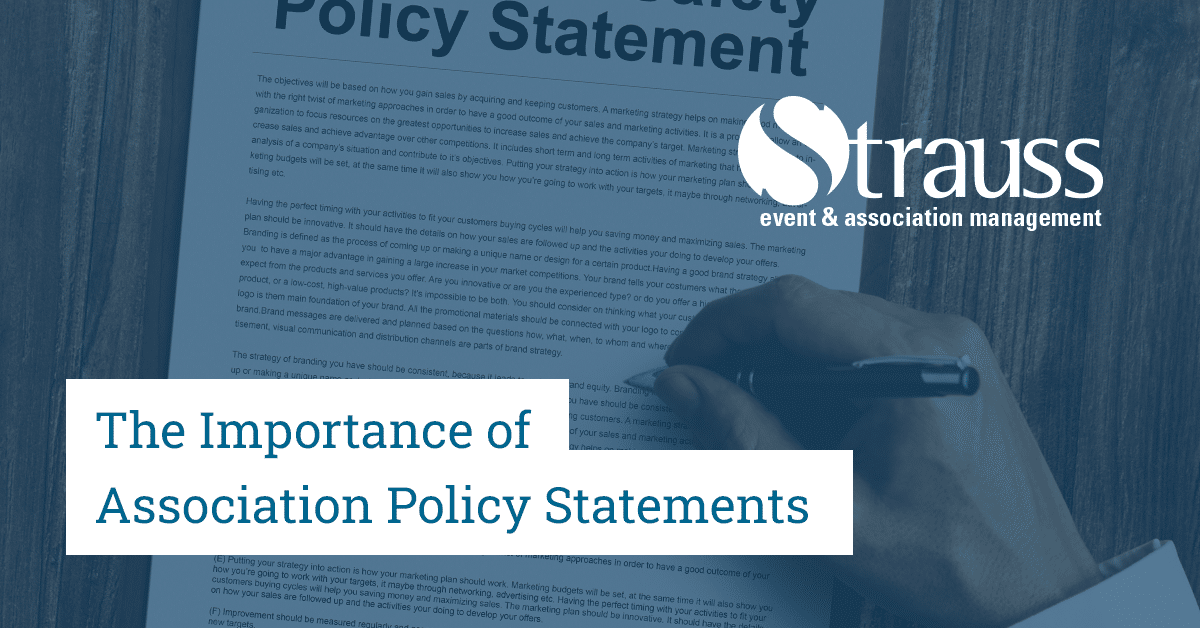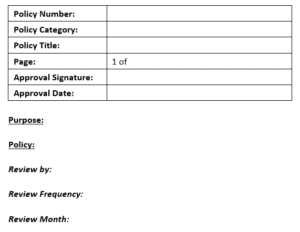Policy statements are the guidelines for the association, they state appropriate standards of action and behaviour for all Board, committee, and staff members. Policy statements can be defined as a definite course of action adopted for expediency, facility, and efficiency.
In short, policy statements detail how things are done within the association.
Why have association policy statements?
A policy statement is necessary for an association to establish clear and concise rules, guidelines, and procedures. It is also used as a reference point for decision-making by the Board and committees.
Why not include these rules and guidelines within the association by-laws you ask? By-laws are a legal document for the association which means every time a change is made it is required to be reviewed by legal representation and then voted on by the membership at an annual meeting or a special meeting of the members. Having certain guidelines within policy statements makes it easier to make changes and updates as deemed necessary. You can also add or remove policy statements as needed with only Board approval.
What makes a good policy statement?
Here are a few tips to keep in mind when creating policy statements for your association:
Keep it simple and concise – Policy statements should be clear, to the point and easy to implement. They should be easy to read and understand without being too long or complex.
Be specific – Policy statements should be specific enough to provide guidance but not so specific they become prescriptive. Full step by step instructions regarding the policies can be included in the association’s Procedures Manual.
Be consistent – Policy statements should be consistent with the association’s other policies and procedures.
Be flexible – Policy statements should be flexible enough to accommodate changes in the association’s circumstances. They should not be so strict they cannot be adapted to meet the association’s changing needs. Policy statements should be reviewed yearly; however, they should be general enough that frequent revision is unnecessary.
What should be included in a policy statement?
A lot of information could potentially be included in a policy statement. However, as per my tips above, they need to be kept simple and concise. A policy statement generally contains the following:
- The name of the association
- The policy number, category, and title
- The purpose of the policy
- The scope of the policy
- Who is responsible for carrying out the policy
- How often the policy is to be reviewed, and by whom
- Last review date
Below is an example of a policy layout:
Types of policy statements
There are many different types of policy statements your association could have from Board roles to membership committee policies to how long to retain electronic and paper records. Below are a few examples of policy statements that most associations have:
- Policy manual updating
- Signing authority
- Travel policy
- Conflict of interest policy
- Financial management – budget approval and investment policies.
- Board duties and responsibilities. Included here would be the roles of the Board members versus the roles of the association staff.
- Board meeting protocols
- E-votes – ability to electronic vote on a motion. This policy has been added to a lot of association within the past few years.
- Record retention
- Committee policies – membership, complaints and ethics, protocol, etc.
- Conferences/events
The policy statements are typically held within the associations’ Board Binder, making them easily accessible for all Board members to review.
As you can see, policy statements are an essential part of any association, as they provide the framework within which to operate. Policies help to ensure that all association Board and committee members are aware of the expectations and are held accountable to the same standards.


